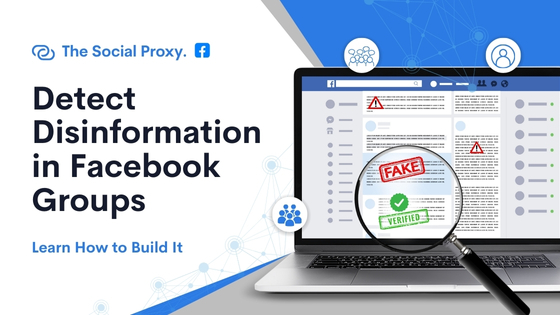import dotenv from "dotenv";
dotenv.config();
//import the request module
import request from "request";
//import the nodejs inbuilt file system
import fs from "fs";
//import the data set for group data
import { groupData } from "./groupData.js";
//get the env variables from the env file
const SCRAPER_CONSUMER_KEY = process.env.SCRAPER_CONSUMER_KEY;
const SCRAPER_CONSUMER_SECRET = process.env.SCRAPER_CONSUMER_SECRET;
const url = process.env.BASE_URL;
// Step 3: Data Preprocessing and Keyword-Specific Analysis
//we already have the dataset of groups that discuss about keyword in groupData.js
//we will get the group feed of the group with the hughest number of posts, members and fequency
// Sample input data from the Facebook Groups API (parsed JSON string)
const parsedGroupData = groupData;
// Keywords to search for in group names or info
const keywords = ["cancer", "cure", "natural"];
// Step 1: Helper function to clean and process member count strings
const parseMembers = (membersString) => {
if (membersString.includes("K")) return parseFloat(membersString) * 1000;
if (membersString.includes("M")) return parseFloat(membersString) * 1000000;
return parseInt(membersString, 10);
};
// Step 2: Helper function to get the number of posts per day from the group info
const getPostsPerDay = (groupInfo) => {
const postsMatch = groupInfo.match(
/(\d+)\s+posts\s+(a\s+day|a\s+month|a\s+year)/
);
if (!postsMatch) return 0;
const [, postCount, period] = postsMatch;
const count = parseInt(postCount, 10);
switch (period) {
case "a day":
return count;
case "a month":
return count / 30; // Approximate posts per day
case "a year":
return count / 365; // Approximate posts per day
default:
return 0;
}
};
// Step 3: Process the group data and filter relevant groups
const processedData = parsedGroupData.map((group) => {
const memberCount = parseMembers(group.members);
// Check if the group name or info contains any of the keywords
const matchesKeywords = keywords.some(
(keyword) =>
group.name.toLowerCase().includes(keyword.toLowerCase()) ||
group.info.toLowerCase().includes(keyword.toLowerCase())
);
//check if it is a public group
if (!group.privacy) return null;
return {
id: group.id,
name: group.name,
url: group.url,
photoUrl: group.photoUrl,
members: memberCount,
postsPerDay: getPostsPerDay(group.info), // Calculate posts per day
privacy: group.privacy,
matchesKeywords,
};
});
// Step 5: Find the group with the highest post frequency per day
const findIdealGroup = (processedData) => {
// Filter groups that are public
const publicGroups = processedData.filter(
(group) => group.privacy === "Public"
);
if (publicGroups.length === 0) {
console.log("No public groups found.");
return null;
}
// Sort groups by the highest postsPerDay in descending order
const sortedGroups = publicGroups.sort(
(a, b) => b.postsPerDay - a.postsPerDay
);
// Return the group with the highest post frequency (first in sorted array)
return sortedGroups[0];
};
// Step 6: Display or log the ideal group with the highest posts per day
const idealGroup = findIdealGroup(processedData);
if (idealGroup) {
console.log("Ideal Group:", idealGroup);
} else {
console.log("No suitable group found.");
}
// Step 7: Save the ideal group data to a file
fs.writeFileSync("idealGroup.json", JSON.stringify(idealGroup, null, 2));
// Step 8: Fetch the posts data from the selected group with the key word using its ID
let groupFeed = {
method: "POST",
url: `${url}groups/feed?consumer_key=${SCRAPER_CONSUMER_KEY}&consumer_secret=${SCRAPER_CONSUMER_SECRET}&groupId=${idealGroup.id}`,
headers: {
"Content-Type": "application/json",
},
body: JSON.stringify({
page_size: 30,
ranking_setting: "TOP_POSTS",
typed_query: "natural cures to cancer",
}),
};
request.post(groupFeed, (error, response, body) => {
if (error) {
console.error("Error fetching group feed:", error);
return;
}
const postsData = response.body;
console.log("Fetched Posts Data:", postsData);
//
let cleanedPostsData = JSON.stringify(postsData, null, 2);
let data = JSON.parse(cleanedPostsData);
fs.writeFileSync("idealGroupFeed.json", data);
});
//the extracted data is cleaned and re-saved in the idealGroupFeed.json


